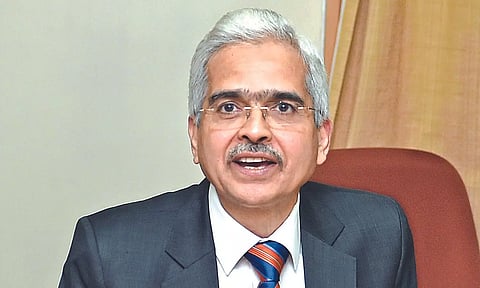

MUMBAI: Reserve Bank Governor Shaktikanta Das on Friday said “we need to watch for movements in vegetable prices in this year’s summer”, which the Met office has predicted to be warmer.
Speaking to reporters after the rate-setting panel voted in favour of the seventh consecutive status quo in rates, Das said the Reserve Bank of India’s (RBI) key objective is to get the inflation rate to the 4 per cent target set for it by the government on a durable basis, and the “last mile” is the most challenging.
“We have to watch what impact it (higher temperatures) has especially on food crops, and in that, I have mentioned certain key vegetables,” Das said, replying to a question on the Indian Meteorological Department’s warning of heat waves till June.
He, however, sounded more confident on wheat, saying much of the harvesting is by and large over. “Wheat... there is not so much worry, but vegetable prices have to be watched... and any other impact that the heat wave conditions may produce,” he said. Deputy Governor Michael Patra said food inflation has been highly volatile in the recent past, and while actors pushing it up keep changing constantly, the efforts are focused on ensuring that this does not spill over into the rest of the consumer price inflation (CPI).
Stating that inflation pressures are emanating from items such as egg, meat, and fish, and also rice, Patra said in the recent past there have been short-term episodes where cereals, vegetables have led to a spike in food inflation. In his statement earlier in the day, the governor had said the RBI’s goal on inflation is in sight and had asked all not to lower the guard against price rise. Asked about the timeline, he said inflation is seen going down below the 4 per cent mark in a few quarters of FY25 but will be going back up. Drawing from the elephant analogy on containing inflation he gave earlier in the day, Das said the “elephant moves at a slow pace” and the last mile is always challenging. “We would like the elephant to return to the forest and stay there on a durable basis. We would like inflation to align with the target on a durable basis,” he added.
Meanwhile, Das said the potential growth rate has gone up since the last study by the RBI, and added that the average growth for fiscal years 2021-22, 2022-23, and 2023-24 comes at 8 per cent.
About the RBI choosing to maintain the real GDP growth estimate at 7 per cent for the current fiscal year, the RBI brass explained that this is due to the base effect of higher growth in the years leading to FY25. Das said if the growth rate comes at 7 per cent for FY25, it will be the fourth consecutive year of 7 per cent growth rate. After the release of official data for FY24 growth in May, the RBI will undertake a study on potential growth and real interest rate, he added. However, the RBI governor refrained from giving any guidance on the monetary policy or the stance going forward. He said the inflation is moderating and the GDP growth is robust at present, but reiterated that the RBI will focus on stability of the financial sector in the next decade.
No system-wide problem with NBFCs: Governor
After acting against two non-banking financial companies (NBFCs) following concerns on their business practices, RBI Governor Shaktikanta Das said there is no “system-wide “ problem with such lenders.
Addressing the customary post-policy press conference, Das said it is not fair to perceive the actions “which came on consecutive days last month “ as a “spate “ of regulatory interventions.
“As a part of the supervision, we take regular review of all players, particularly the major players. I don’t want to say that this is a system-wide problem because we have supervised all the players. The action is only in outlier cases,” Das said. Earlier, he also said the country’s financial sector is “stable “.
He said if the RBI officials find some deviation or non-compliance during the supervision process, the first attempt is for sensitisation of the entity’s management on a bilateral level to take the corrective action.
“Where we see the problems are huge, or the problems are persistent, then only we act,” he said, explaining the trigger for the regulatory actions.
It can be noted that on March 4, the RBI asked IIFL Finance to stop sanctioning or disbursing gold loans with immediate effect, and followed it up by barring J M Financial from giving loans against shares and debentures immediately on observing issues in loan processing and governance. Later in the month, the central bank invited tenders appointment of auditors to undertake special audits at both the firms.
Das said there are over 9,000 registered non-bank lenders and the RBI has acted against only two of them, along with a payment bank. So, it will not be correct to perceive this as a spate of actions, he said.
The RBI will release a framework on fintech self-regulatory organisation by this month-end, and the first of such bodies will come into existence this year itself, he added.